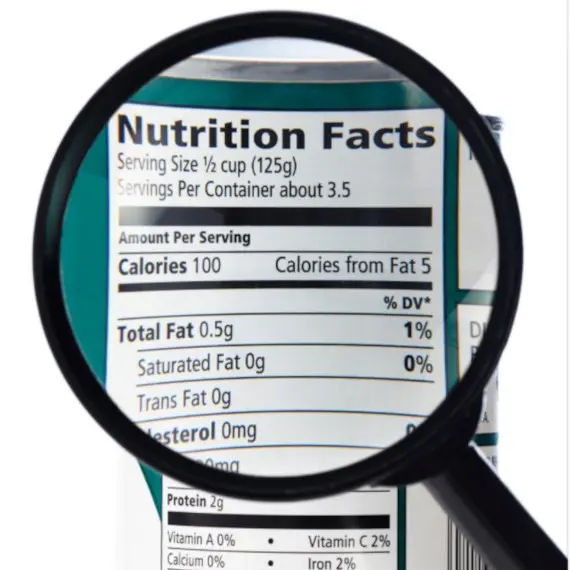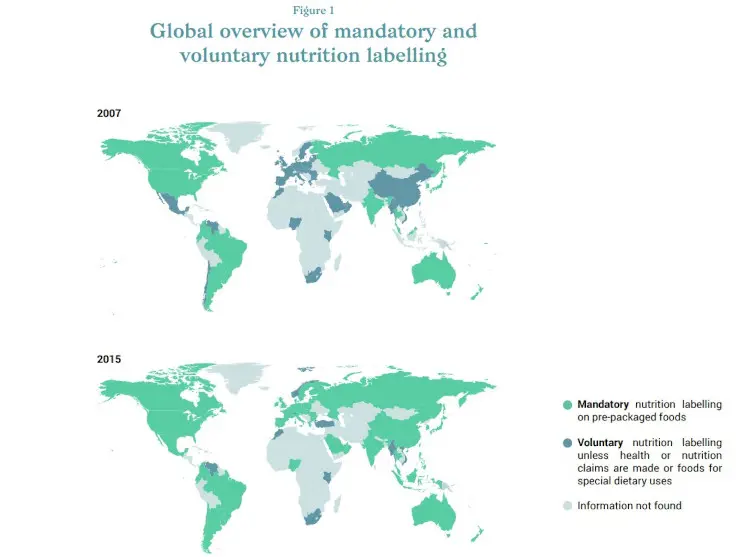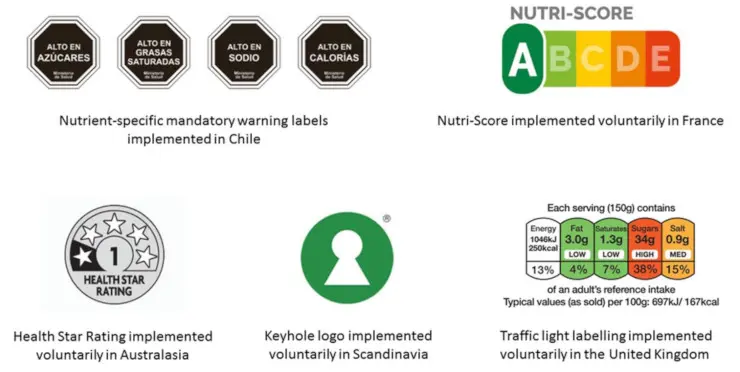Nutrition labelling provides information about the nutritional content of food and beverage products we use and consume each day. It can include summary information such as energy (calories), a health score and statement or more detailed information such as fats, sugars, vitamins and minerals. There's a lot of information out there, so to help you understand how to use nutrition labels to manage your diet we've broken them down into the key elements.
Nutrition Labelling

Why Do We Need Nutrition Labelling?
Unbalanced and unhealthy diets are a key driver of a number of chronic conditions (called Non-Communicable Diseases, NCDs) such as diabetes, cardiovascular disease and metabolic syndrome.
An increasing amount of evidence suggests that nutrition labels can improve understanding of nutritional quality, promote selection of healthier foods and encourage recipes improvements to foods and beverages (also known as reformulation).
Nutrition labels can also allow individuals to choose foods that are right for their diet and lifestyle, for example avoiding high salt foods if hypertensive, or managing carbohydrate intake if type 1 diabetic.

Where can I find Nutrition Labelling?
It is most commonly found on pre-packed items on either the front or back of pack. More recently, nutrition labelling can also be found in non-prepacked products, such as menus in restaurants, cafes, coffee shops, freshly made items and on websites or digital apps.
Nutrition information on non pre-packed foods is becoming increasingly important, as this ‘eating out’ sector accounts for a significant and growing proportion of our diets.
Figure 1 adapted from European Food Information Council (2016) Global Update on Nutrition Labelling

What is typically provided?
Understandably, nutrition labels are different around the world, reflecting how we engage and interact with this information.
Nutrition labels typically include energy (as kcal or kJ), total fats, saturated and unsaturated fats, cholesterol, carbohydrates, protein, fibre, sugars and salt. Vitamins and minerals are less frequently included on labels.
In some countries, summative nutrition scores or statements can also be used. Examples of these include:
- Numerical information: such as kcal, kJ, g of protein or the proportion of recommended intakes.
- Scores and colour coding: typically a summary score with or without colour coding based on the nutritional content of the item. E.g. the Healthy Star Rating in Australasia, The Traffic Light Labelling in the UK, or the Nutri-Score in France.
- Healthy logos: positive signposting based on a summary of nutritional and ingredient content to identify healthy items. E.g. the Eat Well Live Well programme available globally, the Keyhole Logo in Scandinavia.
- Warning statements: nutrient specific statements used on foods high in selected nutrients such as sugar or saturated fat, currently used in Chile.
Image adapted from European Food Information Council (2016) Global Update on Nutrition Labelling
Nutrition Labelliing Terms Explained
PER PORTION OR PER 100g Whether it's calories, proteins, vitamins or even plant bioactives, nutritional components of foods and beverages can be provided per 100g, per portion or even per pack. When provided per 100g, this makes it easier to compare the nutritional content items with each other, however it doesn't provide the context of how much is typically consumed in one sitting. When nutrition information is provided per portion or per pack this provides the information relative to how much is either recommended or typically consumed in one sitting.
ENERGY Calories measure the amount of energy found in food and drinks. The calorie content on nutrition labels can be shown as KiloJoules (kJ) and/or Kilocalories (kcal). A healthy balance is found when calories consumed from food and drink (i.e. energy intake) is the same as the amount of calories we use through movement and activity (i.e. energy expenditure). Remember, calories is only a measure of total energy, it doesn't show the nutritional quality of an item. Find out more about what a calorie is here.
PROTEIN Protein is typically listed in grams and is important for growth, development and cell repair and is an important part of a healthy diet. Find out more about sources of proteins here.
FAT Fats are typically listed in grams and can be provided as total fats or separated into types of fats such as saturated, unsaturated and transfats. Try to choose items lower in saturated fats. Find out more about types of fats and their food sources here.
CARBOHYDRATES There are two main types of carbohydrates; complex starches and simple sugars. Carbohydrate values are usually provided as a total amount in grams then separated into how much of this is simple sugars. Starch is a good source of energy in our diet and contains a range of nutrients, including fibre, calcium, iron and B vitamins. Although not typically labelled on a nutrition table, instead often included in the title or ingredients list, foods rich in wholegrain carbohydrates typically contain more vitamins, minerals and fibre than refined versions. Find out more about carbohydrates here.
FIBRE Fibre is often included in nutrition labels as it is an important dietary component that we typically need to include more of - around 30g a day! Find out more about fibre and its food sources here.
SUGARS Total sugars is often referred to on nutrition labels in grams. This includes both natural occuring sugars (such as those found naturally in milk and whole fruit) as well as intentionally added sugars such as honeys, syrups and sugar. Find out more about sugars here.
SALT Depending on where you are in the world, either salt or sodium (a component of salt) is listed on nutrition labels. Most of our dietary sodium comes from salt (in the form of sodium chloride), but some is naturally present in food. Try to limit intake of foods high in salt in your diet. Find out more about salt and its food sources here.
Recommended Daily Intakes
Both globally and at a country level, recommendations are made on how much of each nutrient is typically needed each day for a healthy and balanced diet. Not only to avoid deficiency and disease but also to maintain a healthy weight and optimum dietary balance. These are commonly known as Recommend Daily Intakes.
Recommended Daily Intakes are usually a guide to help you make balanced choices. Individual dietary needs can vary depending on factors such as age, gender, weight and activity level. Here are the World Health Organisation's recommended daily intakes.
- ENERGY 2,500 kcal for men and 2,000 kcal for women
- FATS Maximum 30% of daily calories. Of which saturated fats should be no more than 10% of total fat intake
- ADDED SUGARS (also known as free sugars) Maximum 10% of daily calories
- SALT Maximum 5g per day, choosing iodised varieties where available
- FRUITS & VEG At least 5 portions a day (roughly 400g)
References
- European Food Information Council (2016) Global Update on Nutrition Labelling: Executive Summary. Available at: ExecutiveSummary.pdf (eufic.org) (Accessed: 24 March 2022).
- Jones, A., Neal, B., Reeve, B., Mhurchu, C.N. and Thow, A.M., 2019. Front-of-pack nutrition labelling to promote healthier diets: current practice and opportunities to strengthen regulation worldwide. BMJ Global Health, 4(6), p.e001882.
- Pineda Ereno, D. 2020 Global front-of-pack nutrition labelling schemes: Impact on marketing strategies. Available at: Global front-of-pack nutrition labeling schemes: Impact on marketing strategies | RAPS (Accessed: 24 March 2022).
- World Health Organisation (2021) Implementing nutrition labelling policies: a review of contextual factors. Available at: 9789240035089-eng.pdf (who.int) (Accessed: 24 March 2022).




